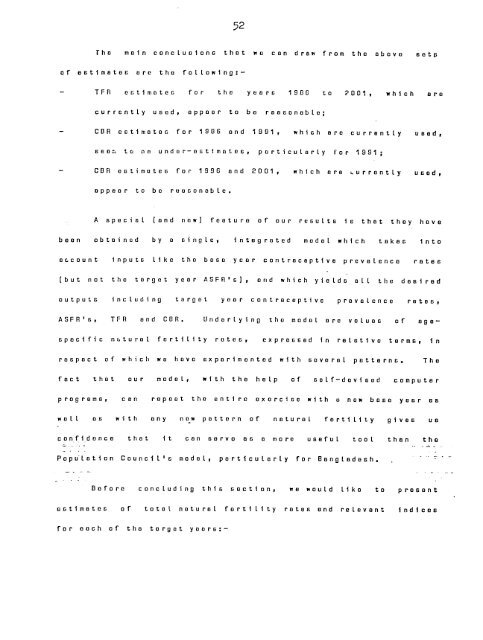c - usaid
c - usaid
c - usaid
Create successful ePaper yourself
Turn your PDF publications into a flip-book with our unique Google optimized e-Paper software.
52<br />
rho main concluaions that wo can draw from the above satF<br />
of estimates are tha fol lowing:<br />
- TFR estimates for the yea rs 196 to 2001, which are<br />
currently used, appear to be reasonablo;<br />
- CBR estimata for 1986 and 1991, which are currently used,<br />
see-, to a under-estimates, particularly Vor 1991;<br />
- CBR estimates for 1996 and 2001, which are Lurrently used,<br />
appear to be reasonab le.<br />
A<br />
special (and now] feature of our results is that they have<br />
been obtained by a single, integrated model which takes into<br />
account inputs like the base year contraceptive prevalence rates<br />
(but not the target year ASFR's] ,<br />
end which yields a L L the desired<br />
outputs including target year contraceptive prevalence rates,<br />
ASFR's, TFR and CBR. Underlying the model are values of agespecific<br />
nLtu ral fertility rates,<br />
expressed in relative terms, in<br />
respect of which we have experimented with several patterns.<br />
The<br />
fact that our model, with the help of self-devised computer<br />
programs, can repeat the enti re exercise with u new base year as<br />
well as with any new pattern of natural ferti lity gives us<br />
confidence that it can serve as a mere useful too L than the<br />
Population Counci l's modal, particularly for Bangladesh. 77<br />
Before concluding this section, we would like to present<br />
estimates of tota natural fertility ratesa nd relevant indices<br />
for each of the target years:
















